
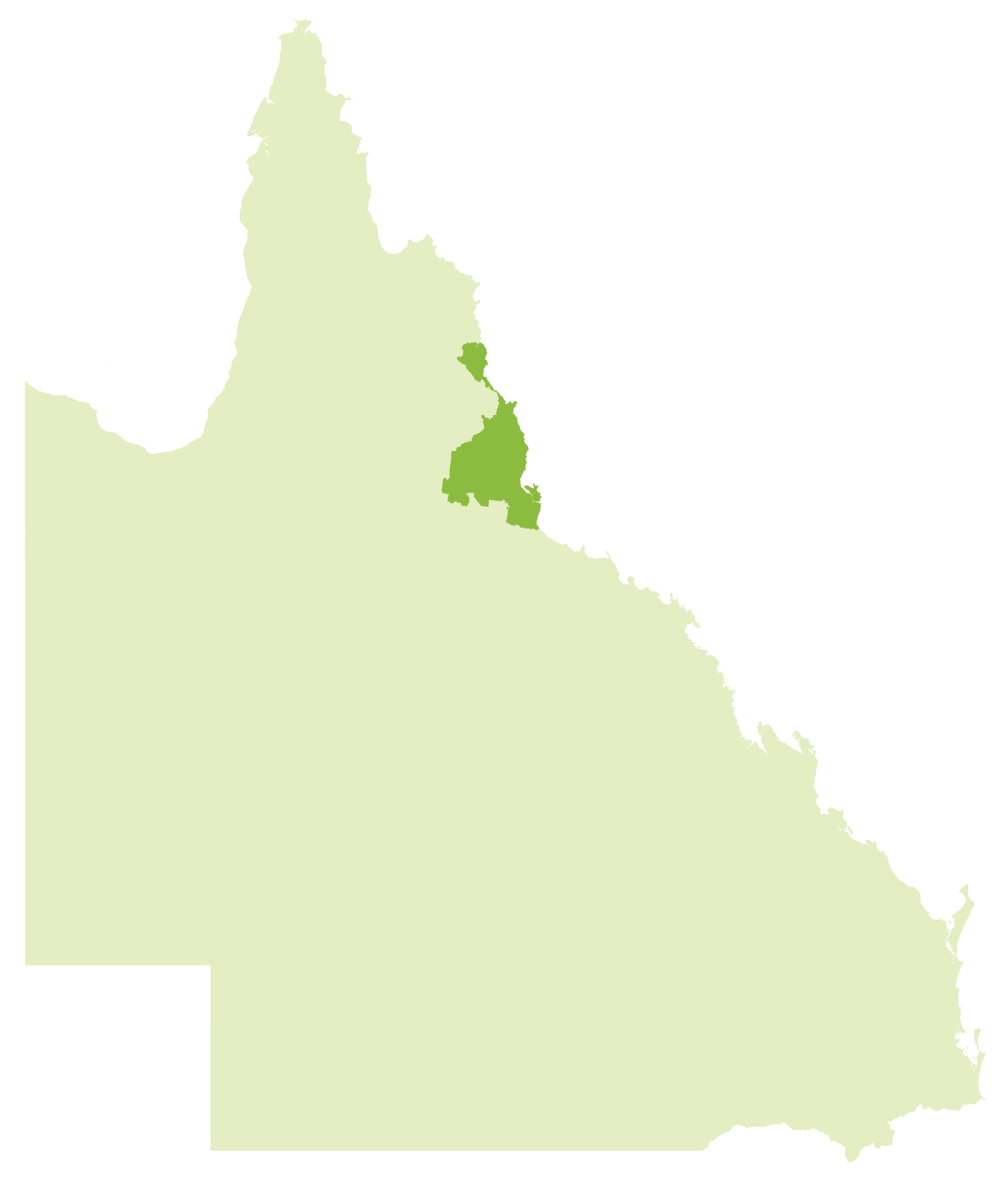
Overview of Wet Tropics
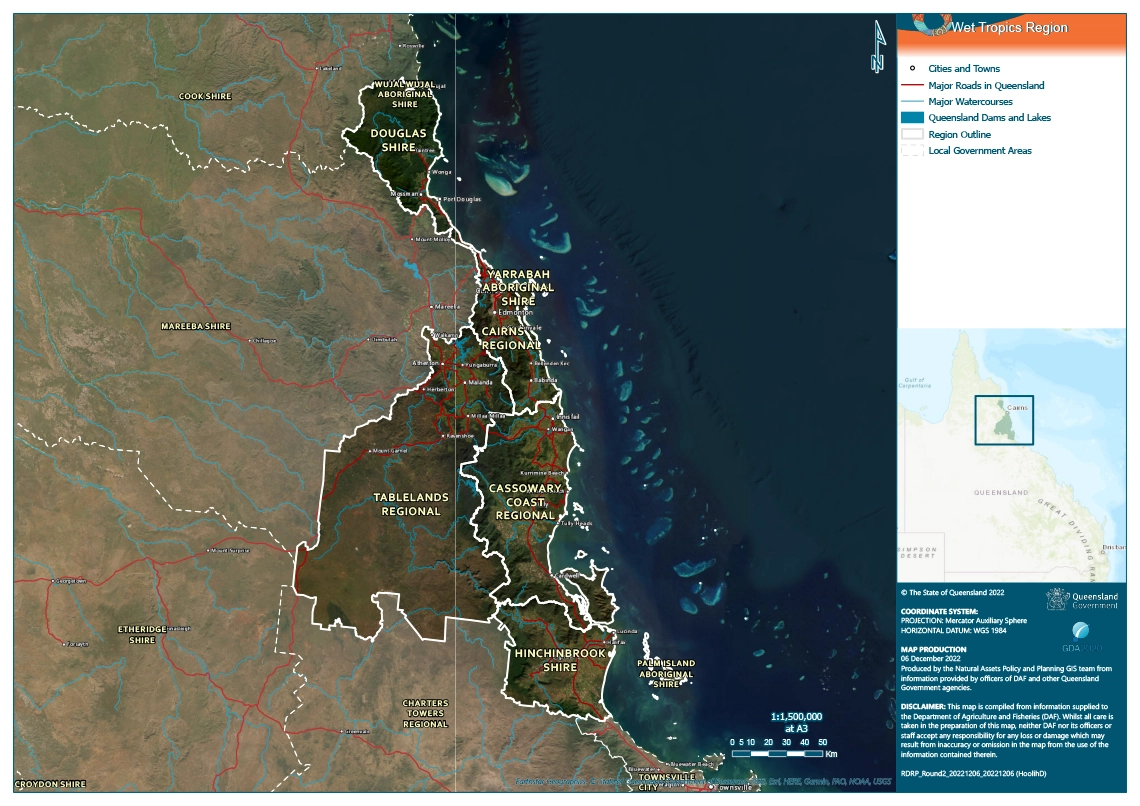
The Wet Tropics region is a unique and tropical landscape of remarkable diversity. It spans across a land area of 23,064km² and incorporates six local government areas (LGAs) managed by the Cairns Regional Council, Cassowary Coast Regional Council, Douglas Shire Council, Hinchinbrook Shire Council, Tablelands Regional Council and Yarrabah Aboriginal Shire Council.
It may seem counterintuitive to consider drought as an issue in the wettest part of Australia. It is a misconception, however, that tropical regions do not experience drought. Every year there is a long dry season of variable intensity. Sometimes, the wet season comes late or finishes early, and consequently, the dry season can be very long. On rare occasions, the wet may fail all together. The impacts of these long dry spells can be devastating, and they have a high cost for local communities. As a globally recognised World Heritage Area, the ecosystems in the Wet Tropics are fragile, and wetlands, rivers, coastal plains and lagoons can be challenged with significant stressors for wildlife and flora. These ecosystems also have cultural significance to Rainforest Aboriginal People and communities in the region.
In the context of the Wet Tropics, drought relates to the variability in seasonality and distribution of rainfall. This change can result in a late, reduced or limited wet season across part or all of the region. Importantly, the concept of drought in the Wet Tropics used in this plan also includes more typical weather conditions correlated with drought, including higher temperatures and heatwave conditions, reductions in rainfall, increased evaporation, and increased variability in rainfall patterns.
Past impacts of drought in this region
Past impacts | People, culture & community
EXTRACTS FROM THE FULL RDRP PLAN

The effects of drought on the Wet Tropics communities have included:
- acute and chronic physical impacts, e.g. from dust and air quality
- increased mental health impacts, including suicide
- impacts on vulnerable individuals and communities, e.g. elderly, First Nations, or remote individuals, people with disabilities, those in the low socioeconomic demographic, and the homeless
- increased burden on social and primary health care networks
- impacts on liveability, e.g. damage to recreation areas and parks, housing
- hardship, trauma and stress
- higher levels of isolation and social disconnection
- reduced vibrancy of rural businesses and towns
- increased cost of living expenses, e.g. due to purchases of potable water
- depletion of social capital.
Past impacts | Economy
EXTRACTS FROM THE FULL RDRP PLAN
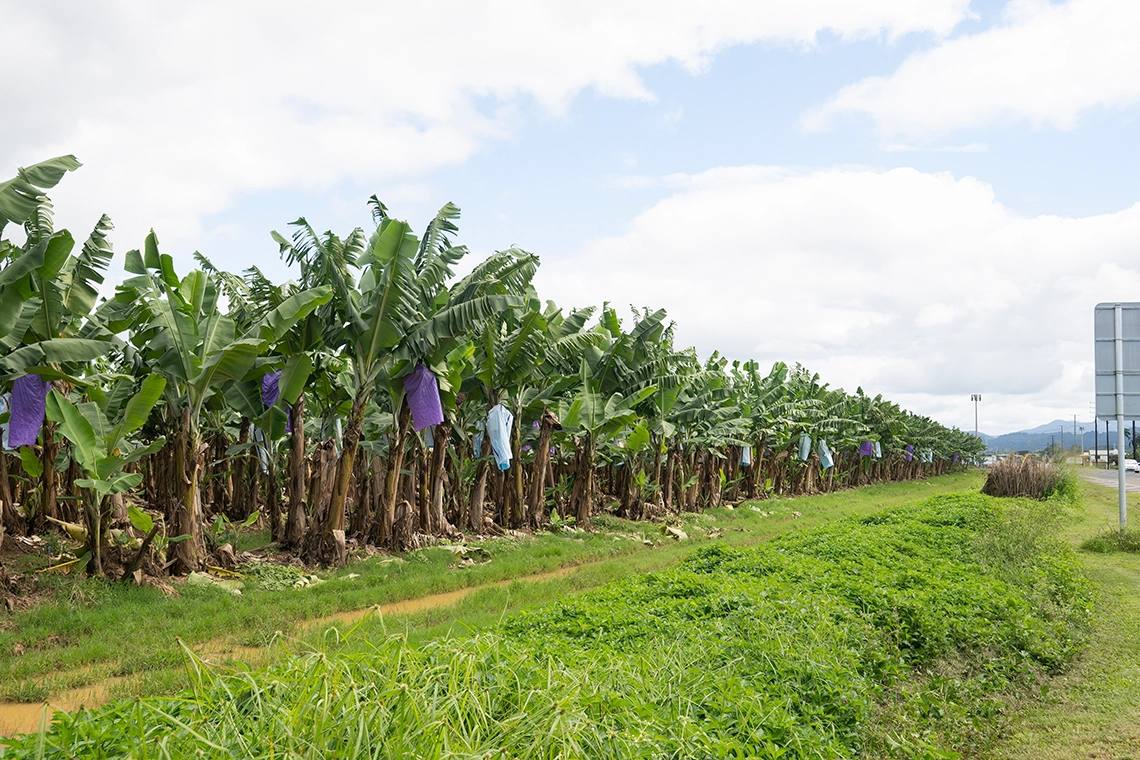
The effects of drought on the Wet Tropics economy have included:
- higher cost of running businesses, e.g. additional water costs for horticultural and grazing industry, increased power costs
- reduced productivity, e.g. due to deteriorated soil/land conditions
- vulnerability of workforce to heat stress
- loss of viability of businesses with flow on impacts across the supply chain, including impacts on employment, income, transport
- impacts of heatwaves on tourists and reduced tourism
- increased costs due to repairs to infrastructure and ecosystems
- concerns around animal welfare, particularly in grazing industries
- regional ripple effects in Wet Tropics and surrounding regions affecting industries, income, and employment.
Past impacts | Landscape & natural environment
EXTRACTS FROM THE FULL RDRP PLAN

The effects of drought on the Wet Tropics landscape and natural environment have included:
- biodiversity impacts (distribution and number), particularly on endemic species
- heat stress on natural assets (e.g. Millaa Millaa falls evaporation and flow) and wildlife
- increased fire risks and changes in fire behaviour
- increased invasive pests and weeds
- degradation of land and water assets
- impacts on acidity of oceans
- endangering of tidal mangroves, with subsequent impacts on fish reproduction and abundance.
Past impacts | Infrastructure and built environment
EXTRACTS FROM THE FULL RDRP PLAN
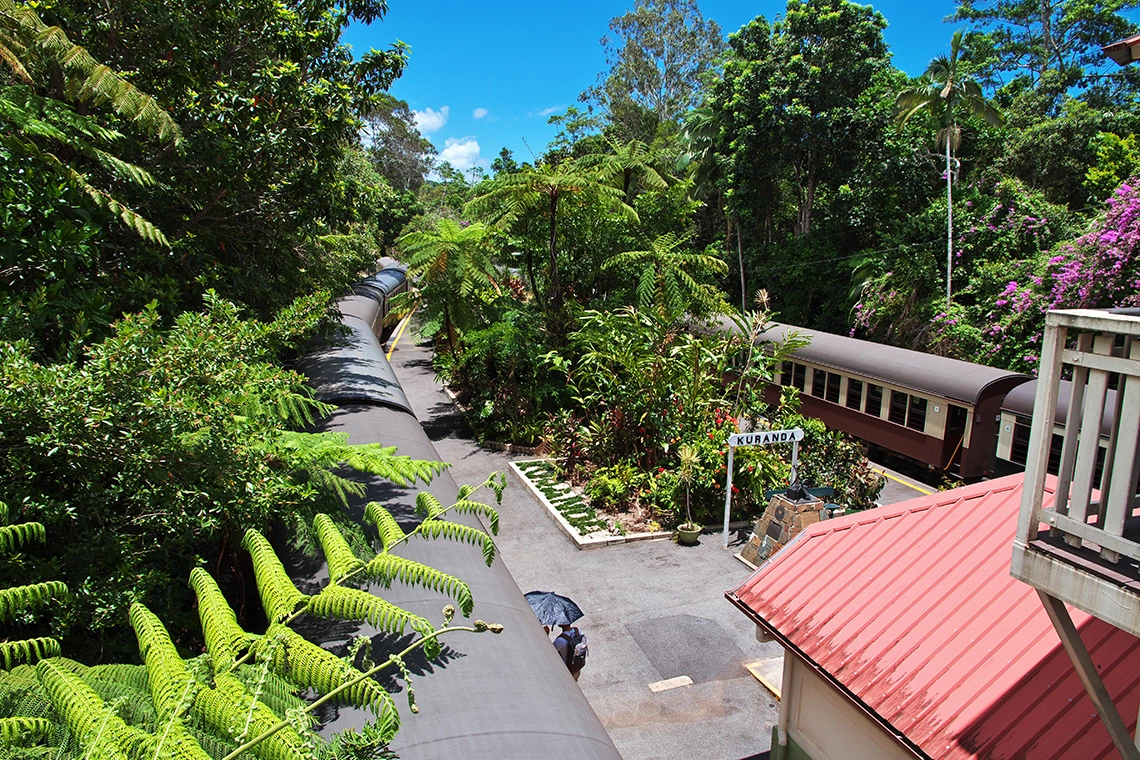
The effects of drought on the Wet Tropics infrastructure and built environment have included:
- impacts on roads, bridges and transportation networks, e.g. major beef roads cracking, surfaces melting, increased dust and danger
- adverse impacts on recreational areas, e.g. sports fields, parks and water parks
- damage to digital connectivity and disruption of service, e.g. due to fire affecting power lines
- increased maintenance and repair costs of existing infrastructure
- potable water supply deterioration
- increased use of equipment and air conditioning
- increased precipitation in water sources and dams.
Likely future impacts of drought in this region
Future impacts | People, culture & community
EXTRACTS FROM THE FULL RDRP PLAN
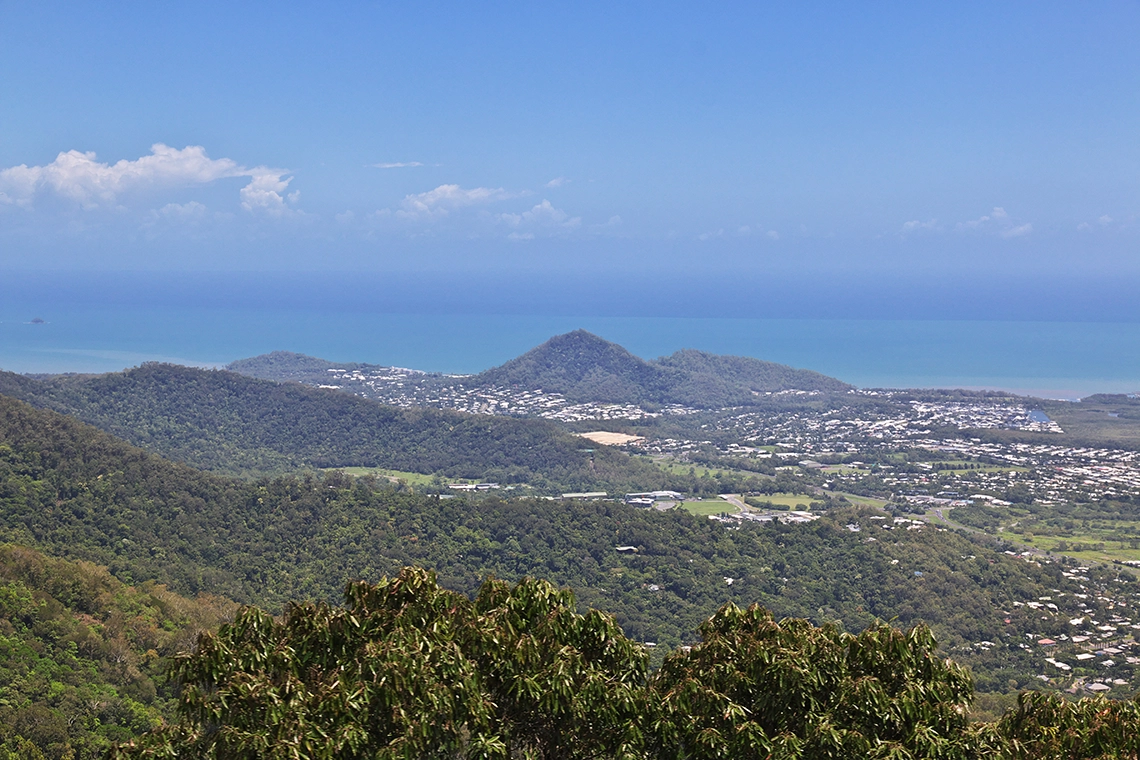
Projected changes to the climate indicate that periods of extreme heat will become hotter and more common. Increasing maximum temperatures associated with drought conditions will mean more people will be vulnerable to heat-related illnesses and stress – especially sick, elderly and very young people, and people living without air-conditioning and outdoor workers. The increasing pattern of warmer nights will potentially affect sleep quality, especially for households without air conditioning, and increase the use of air conditioning in households with it.
The drought conditions will also likely have significant cultural impacts. In addition, the concurrent events of drought and extreme heatwaves present increased mental and physical health risks to vulnerable community members, thereby increasing demand from healthcare services.
“The cultural values of water are very important. Lots of women’s stories about water. Every time there’s a drought it impacts on cultural values. Some trees with cultural values are dying. Where we have rock art in the basalt, that changes too because when it dries out it starts to fissure and crumble. All you can do is photograph it, so you have a record.”
Participant
Future impacts | Economy
EXTRACTS FROM THE FULL RDRP PLAN
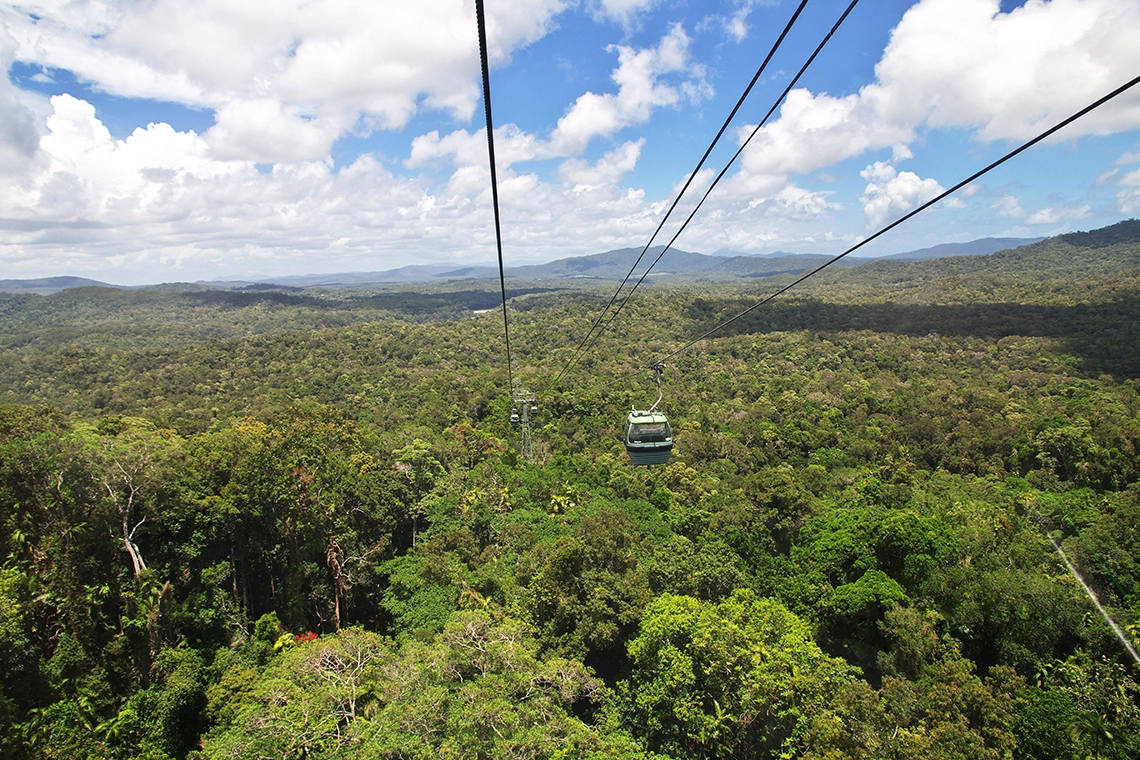
With a heavy reliance on agriculture, the Wet Tropics are likely to be significantly affected by future droughts.
Increased evaporation of moisture from crops and pastures during the drier times of year will lead to an increased need for irrigation water, at a time when there is less fresh water available.
Specific risks to primary industries include:
- direct loss of crops and livestock
- reduced production and profitability
- increased competition or cost for available water
- changes to pollination, growth, and flowering or fruiting patterns.
In some cases, it may be necessary to assess the long-term viability of particular crops or livestock breeds and either switch management practices, cultivars or breeds. The particularly vulnerable include businesses with longer-lived horticulture crops, where it may not be cost effective or feasible to switch crops or cultivars quickly in response to drier weather associated with drought.
Tourism is already very seasonal, so prolonged hot weather may influence tourists’ perception of their safety in the region. Water security issues may also influence the number and types of businesses willing to operate in the region.
Future impacts | Landscape and natural environment
EXTRACTS FROM THE FULL RDRP PLAN
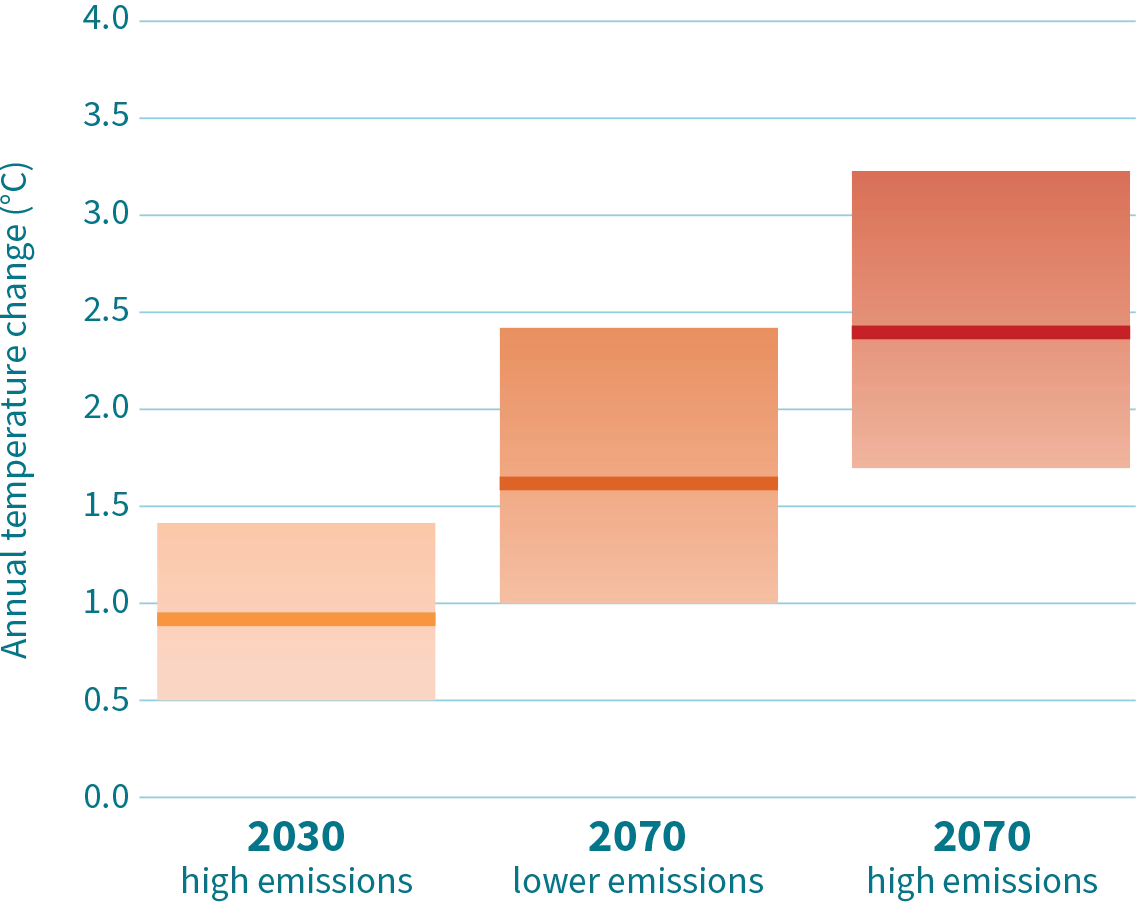
With changes in the temperature, rainfall, evaporation and humidity, some species may no longer be able to survive in their current locations.
On a national scale, the Wet Tropics region is recognised by scientists as being one of the most important climate refugia for many animals currently living in neighbouring regions where it is hotter and drier. Unfortunately, it is likely that some areas of the Wet Tropics region will become too hot for the existing plants or animals. Many species have a narrow climate tolerance, especially endemic species that are unique to a particular habitat and climate.
Future impacts | Infrastructure and built environment
EXTRACTS FROM THE FULL RDRP PLAN

Many regional areas, including the Wet Tropics, have aging public and private infrastructure which has not been designed to meet future climate conditions.
Most existing infrastructure, including buildings and transport, power and water networks, has been designed to suit historic climate conditions. As a result, the infrastructure is likely to be negatively impacted by future drought. Impacts may include:
- Impacts on local planning for development and housing design due to projected changes in fire conditions.
- Increased fire weather due to the combination of increased evaporation, higher average temperatures, and more frequent and hotter days and nights.
- Impacts on council road maintenance and construction due to hot dry weather.
- Staff who work outdoors may need to switch to night work in hotter months due to higher temperatures.
- Increased demand for air conditioning and energy use in homes and business.
- Increased pressure on power generation and transmission during times of peak demand, which could result in widespread power failures. Subsequent disruptions to people and businesses and the possibility of heat-related health impacts.
- Risk to quality of potable water. If bushfire events occur close to water intakes, there may be impact on water quality which would therefore require changes to water treatment.
- Increased risk of subsidence and building damage due to soil cracking in severe drought.
Regional strategy
Secure available agricultural and potable (drinking) water, energy supply and access to communications across the region.

Drought impacts can be accentuated by a lack of basic infrastructure and services. Numerous areas within Wet Tropics communities grapple with water security, energy provision, and telecommunication access challenges. Drought events, along with compounding heatwave and bushfire events can collectively contribute to the risk of reduced available industrial and drinking water, hindered community connectivity, and unreliable access to electricity.
This trifecta of water, energy, and communication insecurities intensifies physical and mental health concerns in regional and indigenous communities, placing further strain on health services. Achieving basic water security, electricity access, and digital connectivity are pivotal for the region’s economic, cultural and societal growth.
Support regional and local businesses to adapt to drought events (including compounding bushfires and heatwaves) by preparing the workforce, and assisting agricultural innovation and development of sustainable land management practices.

The Wet Tropics economy is heavily influenced by the agricultural and tourism industries with many employees working outdoors. Agricultural industries including sugar cane, banana farms and cattle depend on adequate soil moisture. The compounding climate events of drought and humid heatwaves threaten the workforce’s health and therefore productivity. For the tourism industry, drought-heatwave events impact the visitation rates.
Heatwave management for the outdoor workforce along with innovative solutions driving drought-resilient land management practices are necessary to maintain the region’s local economy and ensure a healthy place to work and play.
Build community resilience through ongoing support of mental and physical health, capacity building and social connections.

Drought events intensify health concerns, particularly affecting the mental wellbeing of those in agriculture. The scarcity of water significantly impacts agricultural industries, compelling farmers to make difficult choices for survival – these decisions reverberate through local businesses and community.
Droughts, bushfires and heatwaves exacerbate physical stress, leading health services to witness an upsurge in vulnerable individuals seeking assistance for heat-related health issues. This collective effort contributes to building a resilient community capable of responding to and recovering from the challenges posed by drought events.
Manage landscapes more effectively, protect property and prepare natural and cultural assets for drought impacts to conserve ecosystems and vulnerable species.

The Wet Tropics World Heritage region boasts ancient rainforests hosting a diverse array of endemic species and cultural assets. Currently facing threats that jeopardise ecosystems, drought events coupled with heatwaves, compound existing stresses. Bushfire risk becomes particularly significant in drought periods – threatening lives, property, environment and cultural values.
Research into drought impacts is crucial for managing and fortifying natural and cultural assets. Our ecosystems – vital for clean water, air, and healthy soils – also drive tourism, supporting regional economies. As such, it is important to lift the capacity of key institutions within the landscape that manage these values, including rural fire brigades, traditional owner institutions, as well as grazing companies and families.
Integrate First Nations people’s knowledge of drought resilient Country and ensure they have equal access to health and other services, and healthy Country.

First Nations peoples have interests and rights across the Wet Tropics landscapes. They also hold invaluable lived experiences with drought events, offering crucial insights into building resilience against impacts like water scarcity, bushfires, and heat-stressed conditions. The region encompasses three Aboriginal Shire Councils, including Yarrabah, Australia’s most disadvantaged area with a 37% unemployment rate. This economic disparity exacerbates challenges in accessing equal health and other services, electricity, and connectivity.
Achieving equitable access for all First Nations people to health services and maintaining a healthy Country is imperative, particularly in the face of climate-driven events such as drought.
Support regional governance capacity to deliver regional drought resilience.

Achieving drought resilience in the Wet Tropics demands coordinated efforts across diverse organisational sectors. Essential governance actions include aligning with established climate-resilient strategies and plans, and strategically placing drought resilience within broader regional climate resilience goals.
Establishing a dedicated partnership arrangement to manage and implement these actions is imperative. The sustained development of capacity for long-term drought resilience necessitates support from all levels of government. In fostering collaboration and strategic governance, the region can effectively address the multifaceted challenges posed by drought, ensuring sustained environmental, social, and economic wellbeing.